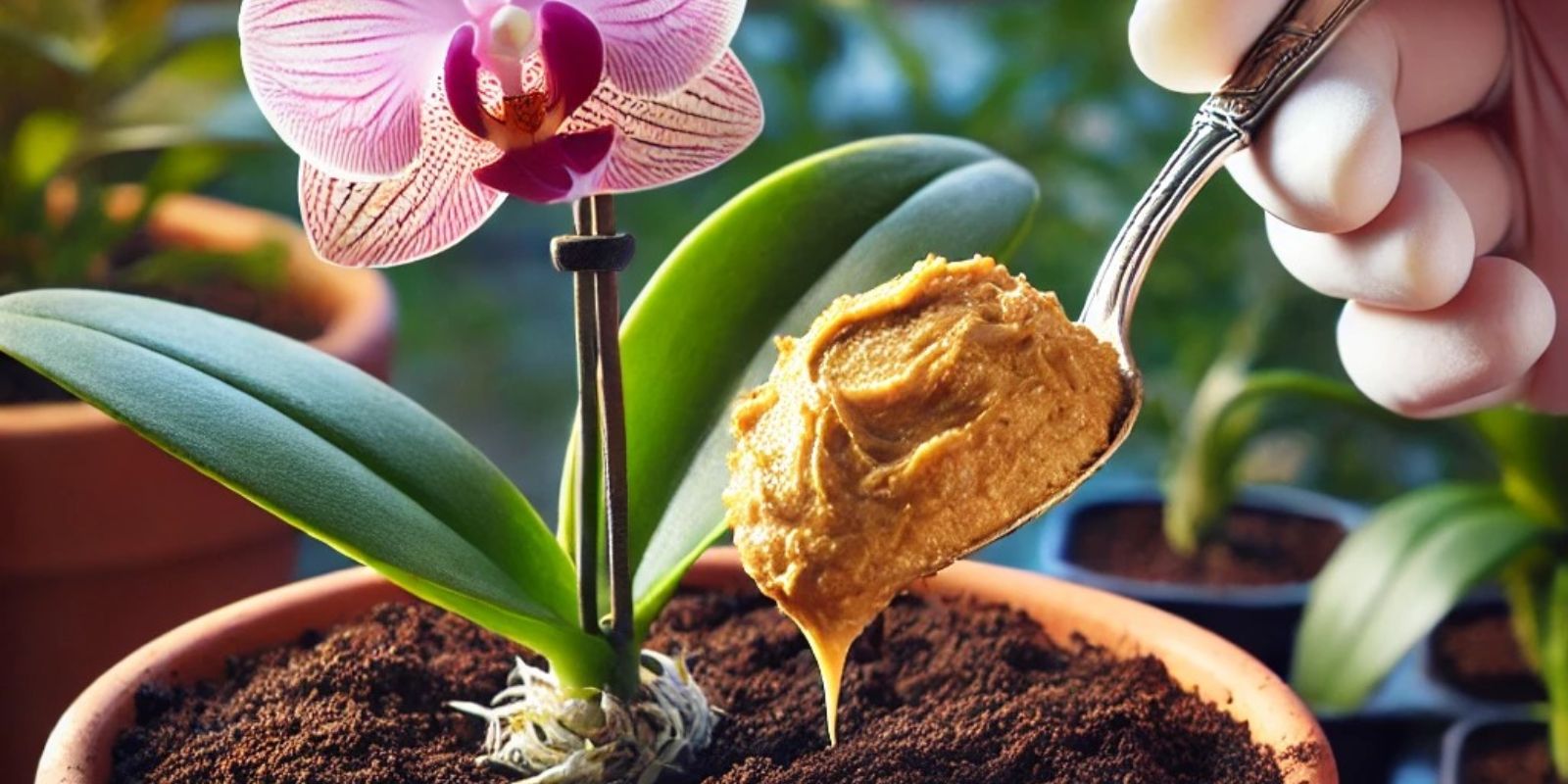Introduction
Orchids are renowned for their stunning blooms and delicate beauty. However, keeping them thriving and ensuring they continue to grow and flower can sometimes be a challenge. If you’ve ever wished for a simple yet effective way to boost your orchid’s growth and ensure it remains lush and vibrant, look no further. There’s a straightforward method that involves just one tablespoon of a specific ingredient, which can work wonders for your orchid. This article will guide you through the process, explain why this ingredient is effective, and provide tips to maximize your orchid’s growth and health.
The Power of Bone Meal: The Secret Ingredient
The ingredient we’re focusing on is bone meal, a natural fertilizer rich in phosphorus and calcium. This simple amendment can significantly enhance your orchid’s growth and flowering potential.
Why Bone Meal?
- Phosphorus Boost: Bone meal is an excellent source of phosphorus, which is crucial for root development, flowering, and overall plant vigor. Phosphorus helps in the production of energy molecules within the plant, supporting robust growth and abundant blooms.
- Calcium Content: Calcium, another key component of bone meal, strengthens plant cell walls and improves overall plant health. It also helps prevent common issues like root rot and supports the development of strong, healthy roots.
- Slow-Release Nutrients: Bone meal provides a slow-release source of nutrients, ensuring that your orchid receives a steady supply of essential elements over time. This slow release helps to maintain consistent growth and flowering.
Step-by-Step Guide to Using Bone Meal for Orchids
1. Gather Your Materials
Before you begin, gather the following materials:
- Bone Meal: Purchase crushed bone meal from a garden center or online. Alternatively, you can use a slow-release orchid fertilizer if bone meal is not available.
- Measuring Spoon: To measure the correct amount of bone meal.
- Watering Can: For watering your orchid.
- Gloves: Optional, for handling the bone meal.
2. Prepare the Bone Meal
Measure the Bone Meal: Use one tablespoon of bone meal for each orchid plant. This amount is sufficient to provide the necessary nutrients without over-fertilizing.
- Tip: If using a slow-release orchid fertilizer, follow the manufacturer’s instructions for the correct dosage.
Apply to Roots: Gently sprinkle the measured bone meal around the base of the orchid, focusing on the root area. Avoid placing the bone meal directly on the plant’s leaves or flowers.
- Application: Ensure the bone meal is spread evenly around the root zone to maximize nutrient uptake.
3. Water Thoroughly
Water the Orchid: After applying the bone meal, water your orchid thoroughly. This helps dissolve the bone meal and allows the nutrients to reach the roots.
- Watering Method: Use a watering can to apply water evenly over the soil. Ensure that the water drains well from the pot to prevent waterlogging.
Monitor Soil Moisture: Keep the soil consistently moist but not soggy. Orchids prefer well-draining soil, so adjust your watering routine as needed.
4. Observe and Maintain
Monitor Growth: Watch for signs of improved growth and blooming. Your orchid should show signs of increased vigor and more frequent blooms as it benefits from the added nutrients.
- Growth Indicators: Look for healthier leaves, stronger roots, and more vibrant flowers.
Regular Care: Continue with your regular orchid care routine, including appropriate watering, light exposure, and periodic fertilization.
- Care Tips: Provide your orchid with bright, indirect light and avoid direct sunlight, which can scorch the leaves.
Additional Tips for Successful Orchid Growth
- Balanced Fertilization: While bone meal is beneficial, it’s important to use a balanced fertilization approach. Complement bone meal with a complete orchid fertilizer to provide all essential nutrients.
- Repotting: Orchids benefit from periodic repotting, especially if the potting mix becomes depleted or compacted. Repot your orchid every 1-2 years to refresh the growing medium and promote healthy growth.
- Soil Quality: Ensure that your orchid is planted in a well-draining potting mix. Orchids typically thrive in a mix of bark, sphagnum moss, and perlite, which provides good aeration and drainage.
- Pest and Disease Management: Regularly check your orchid for pests and diseases. Common issues include aphids, mealybugs, and fungal infections. Address any problems promptly to maintain plant health.
- Humidity: Orchids thrive in a humid environment. Maintain humidity levels around 50-70% to keep your orchid healthy and encourage blooming.
Troubleshooting Common Issues
- Yellowing Leaves: Yellow leaves may indicate over-fertilization or poor drainage. Reduce the frequency of bone meal application and ensure proper watering practices.
- Poor Blooming: If your orchid isn’t blooming as expected, check for other factors such as light levels, overall plant health, and nutrient balance.
- Root Problems: Root rot can occur if the soil is too wet or lacks drainage. Ensure your pot has drainage holes and adjust your watering routine as needed.
Conclusion
Using just one tablespoon of bone meal can significantly boost your orchid’s growth and ensure it remains lush and vibrant. This simple and effective trick leverages the power of phosphorus and calcium to enhance your orchid’s health and flowering potential.
Share your success and gardening tips with the community! Use #OrchidCare #BloomingOrchid #GardeningTips #BoneMealBoost to inspire fellow gardeners and showcase your thriving orchid garden. 🌸✨🌿

